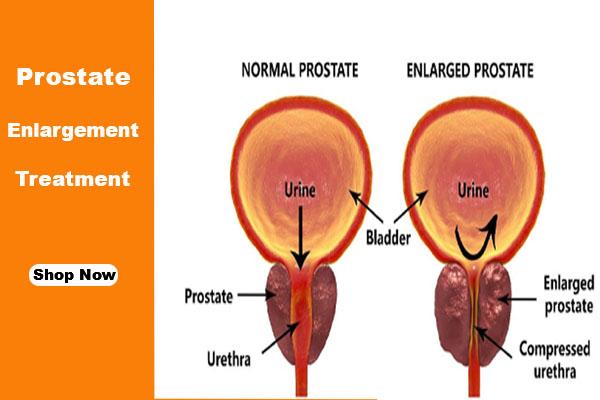Table of contents [Show]
- Causes of Bone Spurs
- 1. Osteoarthritis and Joint Wear
- 2. Aging and Natural Bone Changes
- 3. Joint Injuries
- 4. Repetitive Stress or Overuse
- 5. Poor Posture and Body Mechanics
- 6. Excess Body Weight
- 7. Heredity
- How Bone Spurs Lead to Sciatica
- Preventive Strategies
- 1. Maintain a Healthy Weight
- 2. Eat a Nutrient-Rich Diet
- 3. Use Proper Posture and Lifting Techniques
- 4. Engage in Low-Impact Exercise
- 5. Avoid Repetitive Strain
- 6. Stay Hydrated
- 7. Manage Chronic Conditions
- 8. Wear Supportive Footwear
- Recommended Supplements for Treating Sciatica Caused by Bone Spurs
Bone spurs, also called osteophytes, are bony growths that form along the edges of bones. They are most common in the spine, hip, and knee, often linked to osteoarthritis and joint wear. While they can be harmless, they sometimes press on nerves or reduce joint movement. When bone spurs in the spine pinch the sciatic nerve, they can cause sciatica, a condition marked by pain, numbness, or tingling down the leg.
Causes of Bone Spurs
Understanding the causes of bone spurs in spine, hip, and knee can help in prevention and early treatment:
1. Osteoarthritis and Joint Wear
Osteoarthritis is the most common cause of bone spurs. As cartilage wears down, the body attempts to repair the joint by creating new bone. This extra bone may form in the hips, knees, or along spinal vertebrae, sometimes narrowing spaces where nerves pass.
2. Aging and Natural Bone Changes
As we age, cartilage becomes thinner and less flexible. Ligaments may stiffen, and joints lose their smooth movement. The body compensates by adding bone to stabilize the joint, leading to spur growth.
3. Joint Injuries
Fractures, sprains, and dislocations can change how a joint moves. During healing, the body may produce extra bone for reinforcement, increasing the risk of spurs later.
4. Repetitive Stress or Overuse
Occupations or sports involving repetitive movements like heavy lifting, running, or kneeling place continuous strain on joints. Over time, this accelerates cartilage breakdown and triggers new bone growth.
5. Poor Posture and Body Mechanics
Long-term poor posture, particularly in the neck and lower back, creates uneven spinal pressure. This encourages bone spur formation in those areas and may contribute to how bone spurs in hip cause sciatica through altered movement patterns.
6. Excess Body Weight
Carrying extra weight puts constant pressure on weight-bearing joints like the hips and knees, speeding up cartilage wear and increasing spur formation.
7. Heredity
Genetic factors can make some people more prone to arthritis and early bone changes, raising their risk of developing spurs.
How Bone Spurs Lead to Sciatica
Bone spurs in the spine can cause a narrowing of nerve pathways, known as spinal stenosis. If a spur presses on the sciatic nerve root, pain can radiate from the lower back into the buttock and down the leg. Spurs in the hip or knee may not directly pinch the nerve, but they can change your posture and gait, increasing strain on the lower back. This connection explains why bone spurs hip knee spine pain relief is often discussed alongside sciatica treatment.
Preventive Strategies
While bone spurs cannot always be avoided, certain habits can lower your risk and delay their development:
1. Maintain a Healthy Weight
Extra weight adds pressure to hips, knees, and spine. Every step taken with excess body mass increases wear on cartilage, which may lead to spur growth. Healthy eating and regular activity help manage weight and protect joints.
2. Eat a Nutrient-Rich Diet
A balanced diet supports joint health and slows degenerative changes. Calcium and vitamin D strengthen bones, magnesium helps regulate calcium absorption, and omega-3 fatty acids reduce inflammation. This is central to diet and bone spurs prevention.
3. Use Proper Posture and Lifting Techniques
Sitting or standing incorrectly for long periods increases spinal stress. Keep your shoulders back, spine straight, and feet flat on the floor. When lifting, bend at the knees and keep the object close to your body.
4. Engage in Low-Impact Exercise
Swimming, cycling, and walking strengthen muscles around joints without excessive impact. Strong muscles act as shock absorbers, reducing the load on cartilage and lowering spur risk. This is one of the best exercise to avoid bone spurs recommendations.
5. Avoid Repetitive Strain
Change movement patterns during work or sports to prevent overuse of specific joints. Use supportive footwear and ergonomic tools to reduce stress on hips, knees, and spine.
6. Stay Hydrated
Water keeps cartilage elastic and joint fluid levels stable. Dehydrated cartilage is more prone to damage, which can trigger bone spur growth.
7. Manage Chronic Conditions
Controlling arthritis, diabetes, and other inflammatory disorders can slow cartilage wear. Good blood sugar control also protects nerves, reducing the risk of treat bone spurs to relieve sciatica pain.
8. Wear Supportive Footwear
Shoes with proper cushioning and arch support improve body alignment and reduce unnecessary strain on joints.
Bone spurs in the spine, hip, and knee develop mainly due to joint wear, aging, injuries, or excess strain. If they press on nerves, they can trigger sciatica, which affects daily movement and comfort. By focusing on weight control, nutrition, posture, and low-impact exercise, you can lower the risk and protect your mobility. Combining these preventive steps with prevent bone spurs with supplements tailored for bone and nerve health offers the best chance for lasting relief.
Recommended Supplements for Treating Sciatica Caused by Bone Spurs
Ease bone spur–related sciatica pain with our carefully developed natural supplement range. Each product blends key nutrients, plant-based pain soothers, and gentle muscle relaxants to offer relief without surgery, while helping to strengthen joints over time. They support healthy nerve activity, improve mobility, reduce swelling, and ease the pressure bone spurs can place on the sciatic nerve. By loosening stiffness and calming nerve sensitivity, they make daily movement more comfortable.
Our joint and nerve care supplements and topical creams, available in Ghana, are designed to address both the discomfort and the underlying strain caused by bone spurs. Formulated with glucosamine, chondroitin, MSM, and the calming benefits of aloe vera, along with natural heat therapy ingredients, they work to ease pain, protect joint surfaces, and help prevent future flare-ups.
For persistent sciatica linked to bone spurs, these supplements provide targeted nutrition and anti-inflammatory support to aid cartilage repair, maintain joint cushioning, and reduce irritation. Our topical creams complement this by delivering concentrated relief through aloe vera, camphor, and menthol, creating a soothing warmth that relaxes muscles, relieves nerve pain, and protects against further nerve damage with rich antioxidants.

 Kefas Solomon
Kefas Solomon

Leave a comment
Your email address will not be published. Required fields are marked *